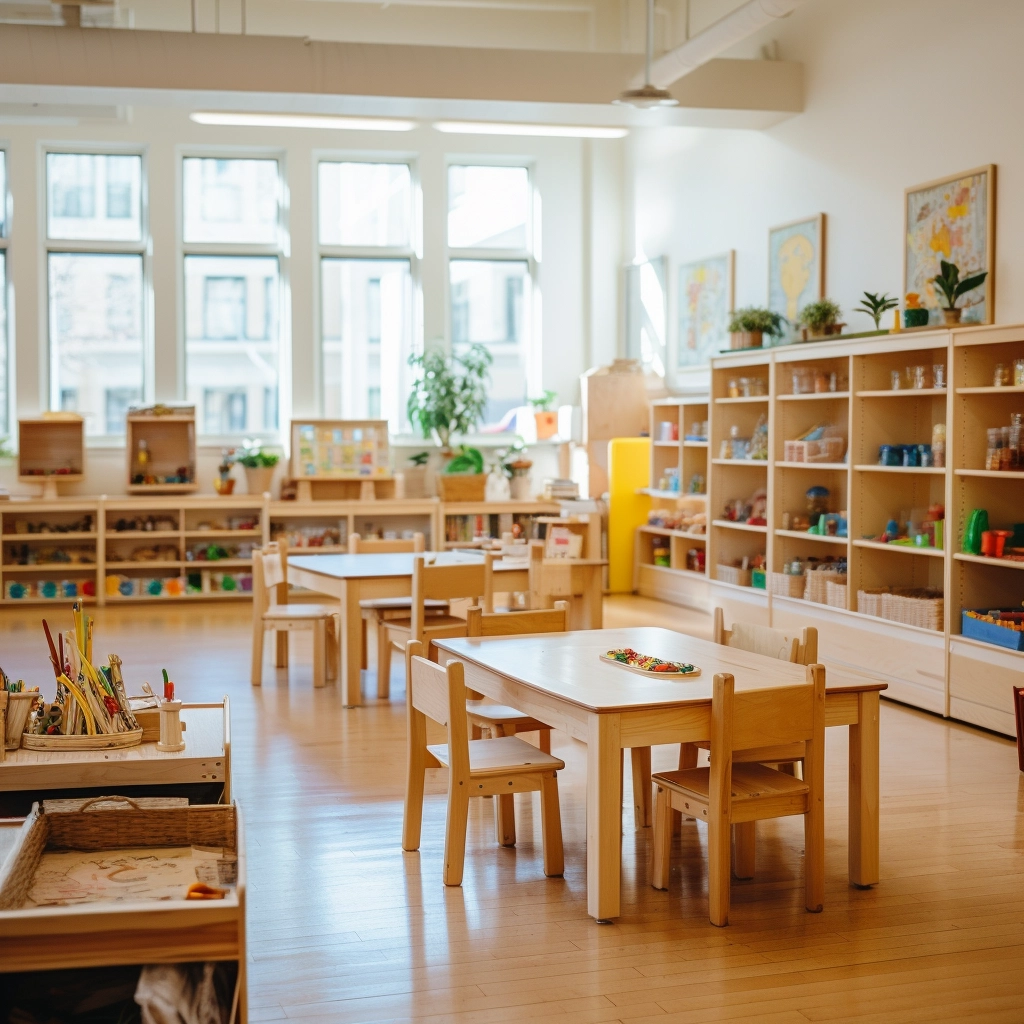Why do some children naturally team up to build a block tower, while others argue over who gets the red crayon? Why does one group create elaborate make-believe scenarios while another struggles to share? Why is it that some kids “click” socially, while others don’t? The difference often lies in a powerful developmental milestone: Cooperative Play.
Cooperative play is the final and most powerful stage of social learning, where children move from parallel play to true collaboration. At this point, kids learn to work together, communicate, take turns, and empathize with others. It’s more than just playing; it’s building the foundation for lifelong social and emotional success.
In this article, we’ll explore how cooperative play transforms simple group activities into significant learning experiences. Understanding this stage will help you nurture confident, community-minded children equipped to thrive in every setting.
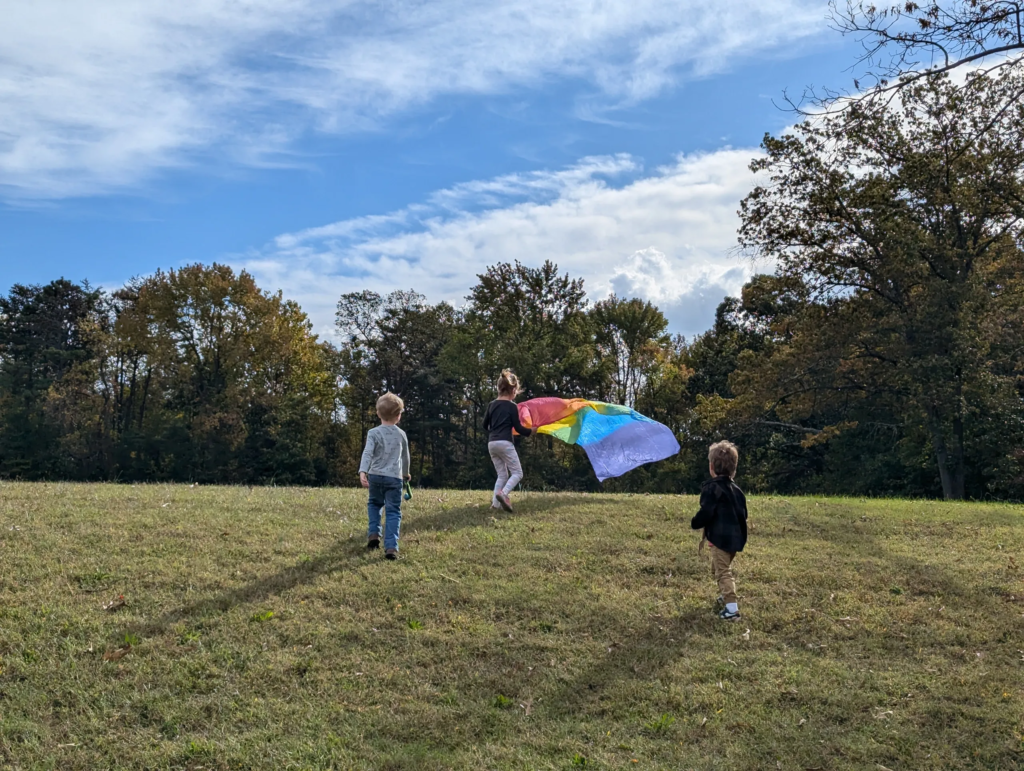
What is Cooperative Play?
Cooperative play is the final and most advanced stage in the progression of children’s social interaction. It refers to a type of play where children actively work together toward shared goals, engaging in meaningful interaction, decision-making, and mutual problem-solving. Unlike earlier stages where children play side by side or engage loosely with peers, cooperative play is marked by intentional collaboration, defined roles, and open communication.
In this stage, children don’t just play near one another; they build, create, and imagine together. Whether they’re acting out a story, constructing a fort, or pretending to run a restaurant, their play involves joint planning and cooperation. Children must listen, compromise, and respond to their peers’ thoughts and feelings. It’s not always smooth since conflicts arise, but the process of resolving those issues becomes part of the learning.
One key characteristic that distinguishes cooperative play is the presence of shared purpose. It’s no longer about individual enjoyment alone. The game, activity, or task becomes a team effort. This naturally builds early leadership skills, emotional intelligence, and empathy.
Möchten Sie einen Raum gestalten, der zum Lernen anregt? Kontaktieren Sie uns, um individuelle Möbellösungen zu entwickeln, die auf die Bedürfnisse Ihres Klassenzimmers zugeschnitten sind.
Key Characteristics of Cooperative Play
Cooperative play represents one of the most advanced forms of social interaction in early childhood. At this stage, children are no longer focused solely on their own play or loosely sharing materials. Instead, they intentionally work together to achieve shared goals, create stories, solve problems, and enjoy group activities.
- Shared Goals and Common Purpose
In cooperative play, children engage in activities with a shared purpose. Whether they are building a tower together, acting out a story, or organizing a pretend tea party, their play is unified by common goals. This collective intention fosters group cohesion and encourages children to stay focused and committed to the activity. - Communication and Negotiation
Verbal and nonverbal communication play a central role. Children express their ideas, explain roles, suggest rules, and respond to others’ input. They also learn to negotiate when disagreements arise, practicing patience and compromise. These interactions significantly enhance language skills and emotional intelligence. - Assigned Roles and Responsibilities
Children often take on specific roles within the play scenario, such as “teacher,” “parent,” “shopkeeper,” or “builder.” These roles may be assigned or voluntarily adopted, and they often come with expectations or tasks. Role-playing in cooperative play helps children understand social roles, routines, and structures in real-life contexts. - Turn-Taking and Rule Following
Unlike solitary or parallel play, cooperative play requires turn-taking and adherence to agreed-upon rules. Children learn to wait, follow group decisions, and respect fair play. These behaviors are essential for classroom readiness and future group work. - Conflict Resolution and Problem-Solving
Disagreements are common, but children in the cooperative play stage are more capable of resolving them constructively. They may suggest solutions, vote as a group, or seek help from peers or adults. This nurtures early leadership and teamwork skills. - Emotional Engagement and Empathy
Cooperative play allows children to connect emotionally with peers. They show care when a friend is upset, celebrate joint success, or comfort each other during setbacks. These experiences deepen their sense of empathy and strengthen peer relationships.
From Independence to Collaboration: The Six Stages of Play
To truly understand cooperative play, we have to zoom out and look at the whole picture of how children’s social play evolves. Psychologist Mildred Parten identified six stages of play back in 1932, and her model remains one of the most widely accepted frameworks in early childhood development today. These stages reflect a natural progression from independence to deep collaboration, with cooperative play as the final stage in that journey.
Let’s break them down:
Unoccupied Play
This stage involves spontaneous and seemingly aimless movements. Children may wave their arms, kick their legs, or observe their surroundings without engaging in any structured activity. Though passive in appearance, these actions lay the groundwork for later physical coordination and sensory awareness.
Solitary Play
Play becomes focused and independent. A child engages deeply with materials or toys, unaware of or indifferent to nearby peers. Solitary play promotes concentration, problem-solving, and early cognitive development, serving as the foundation for self-direction and autonomy.
Onlooker Play
Children begin observing others at play with intent. They may comment, ask questions, or watch closely, but do not join in. This stage indicates growing social awareness and an interest in peer behavior, often acting as a precursor to active participation.

Parallel Play
Children play alongside one another using similar materials or themes, but without direct interaction or shared objectives. Although each child remains focused on their task, the proximity and mutual observation promote imitation, awareness of others, and early peer tolerance.
Associative Play
Interaction increases. Children begin talking, sharing materials, and showing interest in one another’s activities. However, play remains uncoordinated, with each child still pursuing their outcomes. This stage fosters basic social exchange, such as turn-taking and verbal communication, but lacks collective planning.
Cooperative Play
Social play reaches its highest form. Children engage in shared activities with common goals, clearly defined roles, and group planning. They collaborate intentionally, make joint decisions, resolve conflicts, and adjust behaviors based on peer feedback. This stage supports the development of empathy, leadership, flexibility, and team-oriented problem-solving.
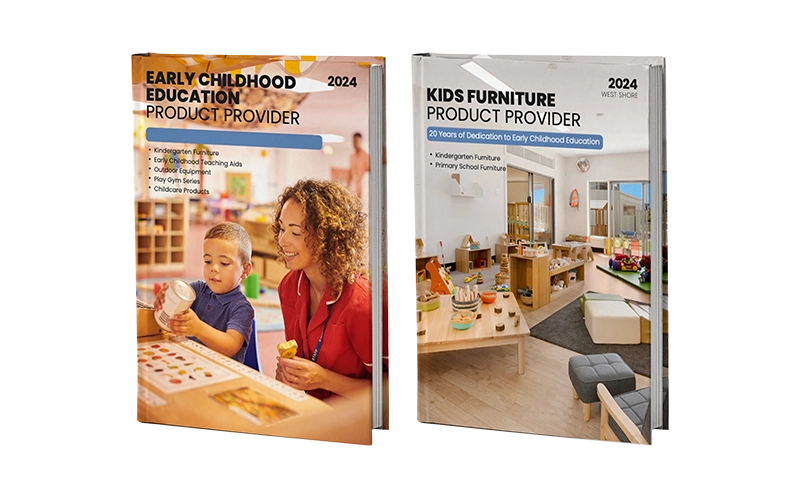
When Does Cooperative Play Happen?
Cooperative play typically begins to emerge between the ages of 4 and 5, though this timeline varies based on a child’s developmental readiness, social environment, and exposure to peer interaction. It is considered the final stage in the progression of social play, following solitary, parallel, and associative stages.
The onset of cooperative play depends on several key developmental factors:
- Cognitive maturity, including the ability to plan, remember rules, and understand sequencing
- Sprachentwicklung enables children to express ideas, negotiate roles, and resolve disagreements
- Emotionale Regulierung, which supports turn-taking, impulse control, and empathy
- Social exposure, through group settings like preschool or daycare, where interaction is frequent and guided
Children are generally ready for cooperative play once they can sustain attention during shared tasks, recognize others’ perspectives, and adapt to group dynamics. This is especially evident in settings where structured activities naturally encourage teamwork, such as Montessori classrooms where practical life work (like food preparation or cleaning) is done collaboratively, and mixed-age groupings support peer modeling.

Benefits of Cooperative Play
Encourages Collaboration
Cooperative play allows children to work together toward shared goals, whether they’re building, role-playing, or completing tasks. This kind of group interaction fosters a natural sense of teamwork, where children must consider others’ perspectives, listen actively, and adjust their actions to benefit the whole. These moments of real collaboration help children internalize the value of collective effort over individual success.
Teaches Trust and Conflict Resolution
While playing together, disagreements are inevitable. Cooperative play offers a safe space for children to experience minor conflicts and learn how to resolve them respectfully. Through repeated interactions, they begin to trust that others will listen, that rules will be followed, and that differences can be resolved through communication rather than withdrawal or aggression.
Helps Develop Self-Regulation
To cooperate successfully, children must manage impulses, wait their turn, and stay focused on group tasks. These social constraints require them to control their behavior in ways that solitary play does not. Cooperative play provides continuous opportunities to practice self-regulation in a real-world, emotionally engaging context.
Boosts Communication Skills
In cooperative play, children must articulate their ideas, negotiate roles, clarify rules, and resolve misunderstandings. These verbal exchanges build vocabulary, sentence structure, and conversational flow, which is especially valuable in language-rich environments like Montessori and Reggio-inspired classrooms.
Introduces Empathy
Children begin to recognize that others have feelings, opinions, and needs. Whether comforting a sad teammate or adjusting their behavior to include a shy peer, cooperative play makes empathy an active, practiced skill. Over time, children learn to anticipate how their actions affect the group dynamic.
Friendship Building
Children who engage in cooperative play are more likely to form lasting friendships. Shared experiences, problem-solving, and mutual achievements build connection and trust. These social bonds not only enhance the learning environment but also provide emotional stability and motivation to engage positively with others.
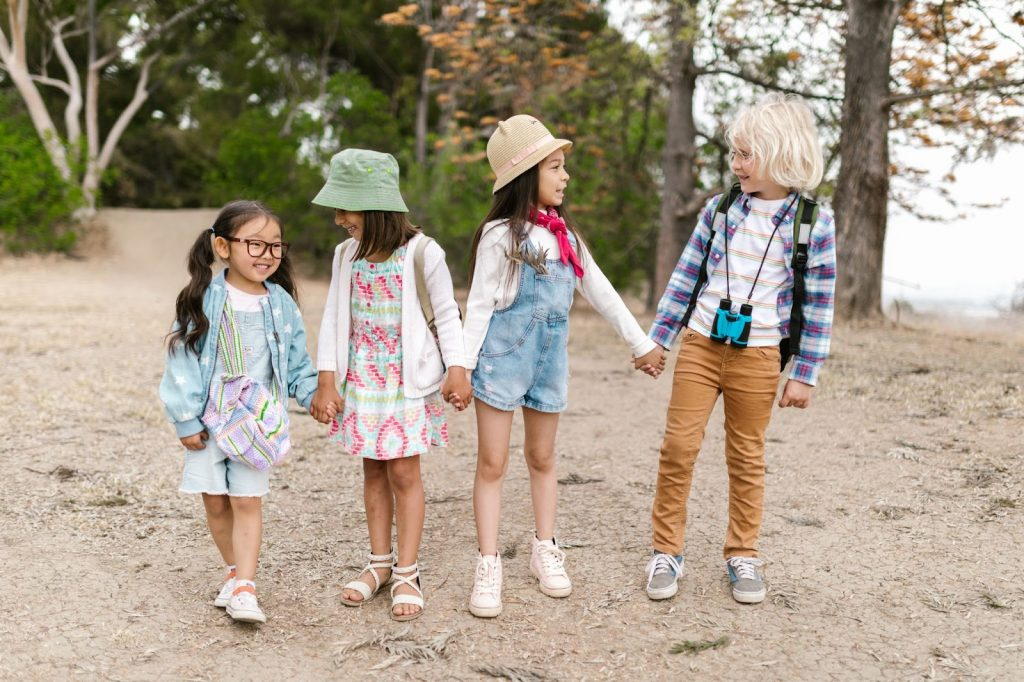
How to Promote Cooperative Play?
Promoting cooperative play requires more than simply placing children in the same room. It involves creating intentional opportunities, modeling positive behavior, and preparing environments that support social interaction. When guided correctly, cooperative play becomes a natural extension of the classroom culture, especially in Montessori and Reggio-inspired settings.
Design the Environment for Collaboration
Physical space influences behavior. Classrooms should include areas where small groups can gather comfortably, with enough materials to encourage sharing but not so many that children never need to cooperate. Open-ended materials such as building blocks, dramatic play props, and large-scale art supplies naturally invite collaboration.
Model Cooperative Behavior
Children imitate what they see. Educators and caregivers should model cooperation by working respectfully with peers and involving children in group tasks. Using phrases like “Let’s solve this together” or “How can we share this job?” teaches cooperation by example and sets a tone of collaboration.
Introduce Activities That Require Teamwork
Select games, projects, and routines that cannot be completed alone. Tasks such as group science experiments, joint storytelling, or partner-based art projects force children to plan, communicate, and adjust based on others’ input. These structured interactions build trust and interdependence over time.
Teach Social Language and Emotional Tools
Some children don’t know how to join a group or handle disagreement. Teaching specific phrases like “Can I play with you?” or “Let’s take turns” provides children with tools to initiate and sustain cooperative interaction. Additionally, guiding them to recognize and verbalize feelings helps prevent conflict and supports emotional regulation during group play.
Encourage Reflection and Positive Reinforcement
After group activities, brief discussions can help children reflect on their cooperation. Asking questions like “How did your group work together?” or “What helped you finish the task?” strengthens awareness of teamwork. Reinforcing cooperative behavior through praise also motivates repetition.
Möchten Sie einen Raum gestalten, der zum Lernen anregt? Kontaktieren Sie uns, um individuelle Möbellösungen zu entwickeln, die auf die Bedürfnisse Ihres Klassenzimmers zugeschnitten sind.
10 Examples of Cooperative Play Activities
The following examples illustrate what cooperative play looks like in real-world early education settings. Each activity requires children to share responsibility, negotiate roles, and work toward a shared goal, which are key indicators of cooperative play.
1. Building a Block Structure Together
Children plan and construct a large building or cityscape using blocks. They decide together who builds what, what the structure will be, and how to solve design challenges.
2. Group Role Play (“Restaurant”, “Doctor”, “School”)
Kids assign themselves roles in a pretend scenario, such as waiter, chef, and customer, and act out tasks. They must stay in character, follow shared storylines, and solve problems that arise.
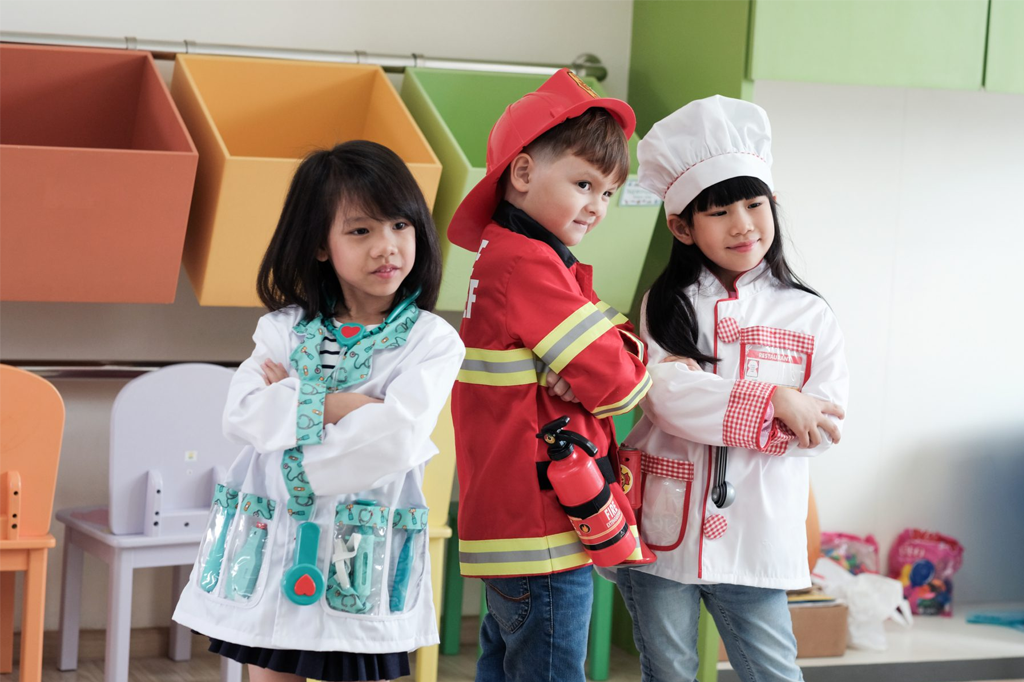
3. Creating a Group Mural or Artwork
Children work on one large piece of art together, such as a mural or poster. They decide who draws what, how to divide space, and how to combine ideas.
4. Collaborative Storytelling Circle
Each child takes turns adding a sentence or idea to build a shared story. This strengthens listening, sequencing, and group creativity.
5. Partner Reading or Picture Walks
In pairs or small groups, children “read” a picture book together or take turns narrating. They must take turns, listen, and build on each other’s observations.
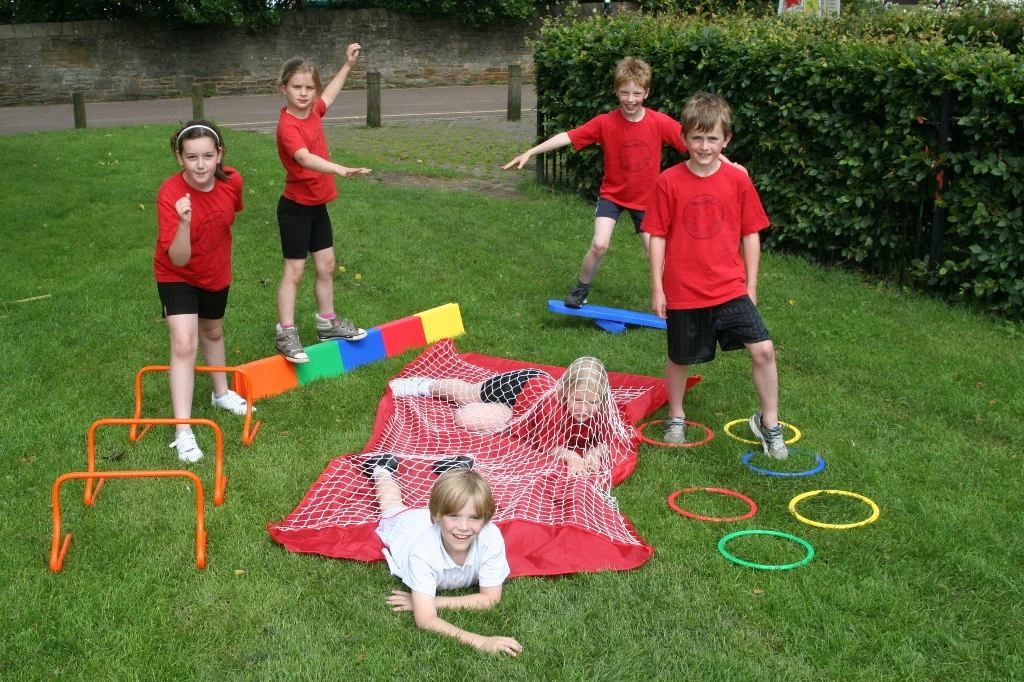
6. Team Obstacle Course
A group completes an introductory obstacle course where cooperation is needed. For example, one child holds a rope while another balances or helps others through the path.
7. Cooking or Snack Preparation Together
Montessori-style food preparation activities, like making fruit salad or sandwiches, require children to divide tasks and coordinate timing, creating natural opportunities for cooperative learning.
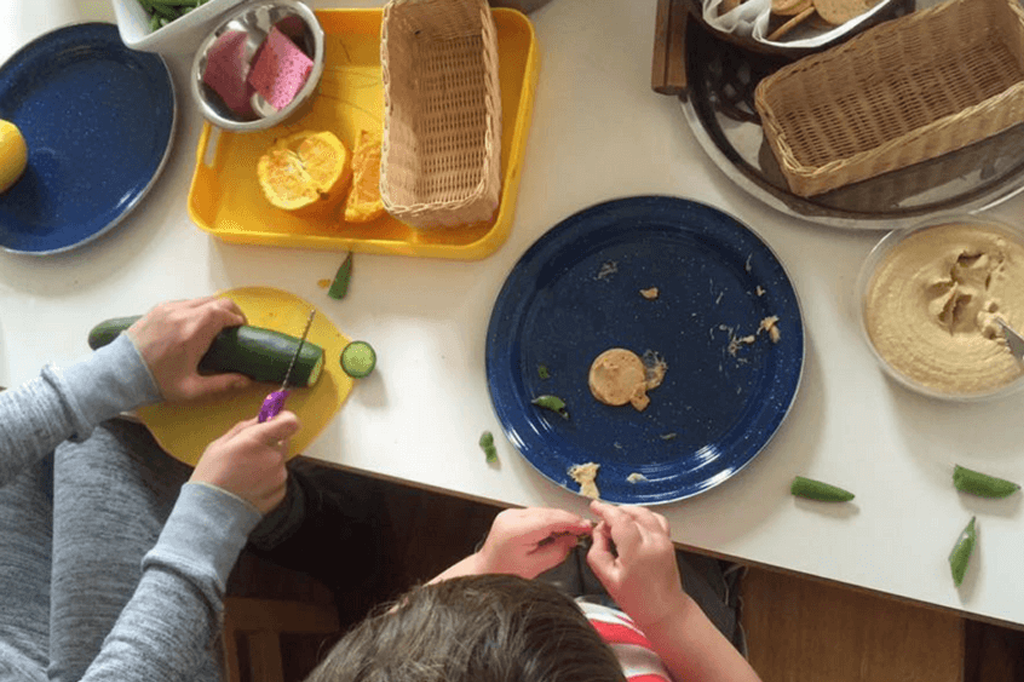
8. Cleaning the Classroom as a Group
Students work together to clean up after an activity or organize materials. One sweeps, another returns tools, and another folds clothes, with everyone working toward a clean, shared space.
9. Puppet Shows or Theatrical Performances
Children write, rehearse, and perform a puppet show or skit together. They assign roles (performer, narrator, prop manager) and coordinate timing and action.
10. Group Science Experiment
In small groups, children experiment, such as mixing colors or testing gravity. Each child has a role, whether pouring, measuring, or observing, and they must communicate and share results.
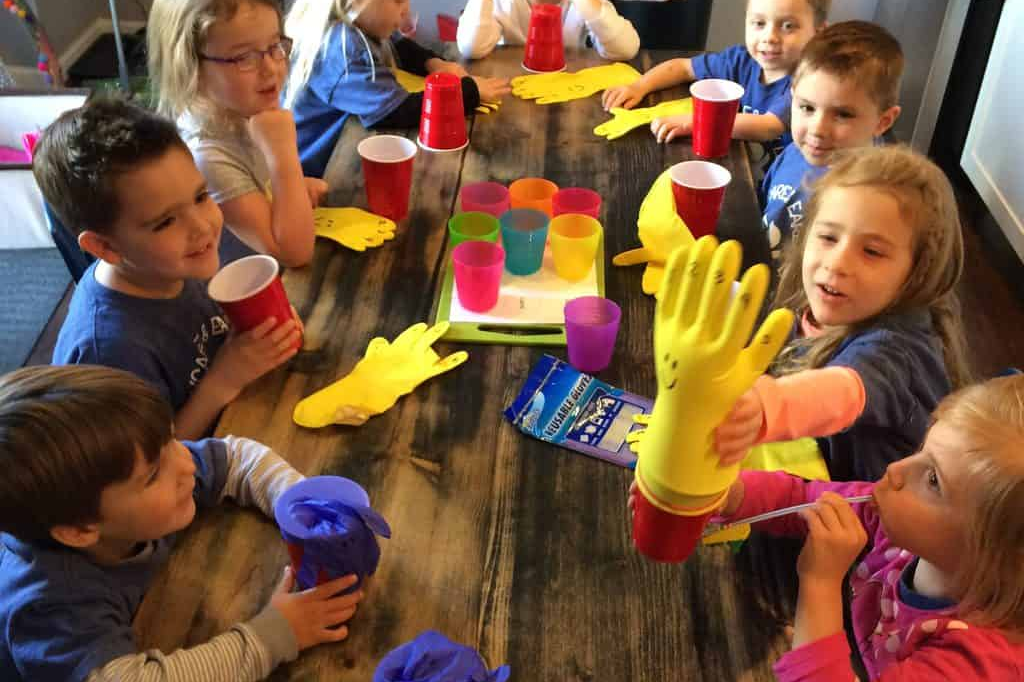

Häufig gestellte Fragen (FAQs)
How can teachers encourage cooperative activities?
Teachers can encourage cooperative activities by creating environments that support group interaction, such as arranging small-group workstations and offering open-ended materials. They should model cooperative behavior, assign purposeful group tasks, and teach children how to communicate, take turns, and resolve conflicts. Encouragement and gentle guidance help children feel safe to engage with peers and work toward shared goals.
What are some of the challenges that children face while playing together?
Children may struggle with sharing, waiting their turn, compromising, or handling disagreements during cooperative play. Some may have difficulty expressing themselves verbally or understanding others’ perspectives. Emotional regulation, language delays, or lack of exposure to social situations can also create barriers. Teachers can support these challenges by offering structured opportunities to practice group skills in low-pressure settings.
What function does technology serve in promoting cooperative activities?
When used thoughtfully, technology can support cooperative play by offering interactive tools that require collaboration, such as digital storytelling apps, multi-touch screens, or coding games designed for pairs or groups. However, technology should never replace physical, face-to-face interaction. In early childhood settings, it’s most effective as a complement to hands-on, socially engaging activities that encourage teamwork and communication.
What if my child still prefers onlooker or solitary play?
This is entirely normal. Even when children reach the age for cooperative play, they may still shift between earlier stages like solitary, parallel, or onlooker play. These stages remain valuable and help support emotional self-regulation and observation skills.
Why is my child reluctant to play with others?
Some children are naturally more reserved or shy and may take longer to feel comfortable in group settings. It’s important to let them engage at their own pace without pressure. Gentle encouragement and consistent exposure to positive social environments can help.
What should I do if my child only watches others play?
Observation is often a first step toward participation. If your child is interested but hesitant, you can support them by joining them near the group and modeling friendly interaction. If concerns persist, consulting a pediatric specialist can provide guidance tailored to your child’s needs.
Abschluss
Cooperative play represents one of the most significant milestones in early childhood development. It marks the shift from individual exploration to purposeful social interaction, where children share, negotiate, and build together. Through cooperative play, young learners develop essential life skills such as empathy, problem-solving, communication, and emotional regulation. Recognizing the characteristics of collaborative play and knowing when it naturally occurs allows educators and parents to better support a child’s growth, helping them transition through all stages of play with confidence and care.
Creating the right environment is crucial. When classrooms are designed with group interaction in mind, with spaces that invite collaboration, materials that encourage shared goals, and layouts that promote natural flow, children are far more likely to engage in deep, sustained cooperative play. At West Shore Möbel, attention to these developmental needs is built into every product. From shared activity tables to practical life stations that encourage group tasks, the right furniture isn’t just about durability; it’s about supporting real human connection. When physical spaces are crafted with intention, children thrive not just academically, but socially and emotionally.





